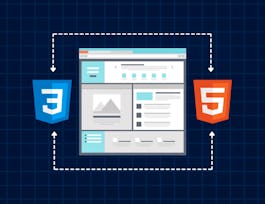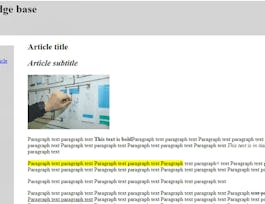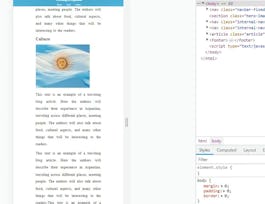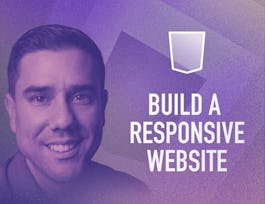In this course, we’ll explore the history of layout on the web and techniques that have been used to create those layouts. You’ll practice using Flexbox CSS and gain an understanding of how Flexbox works to create layouts for web pages. We’ll practice using responsive web design and discuss the challenges of managing layouts across multiple screen sizes. You’ll learn specific techniques to build a responsive web page and practice using mobile first development. Lastly, you’ll apply the techniques learned in this course by using Flexbox properties to create a mini portfolio website and deploy it on GitHub.



Details to know

Add to your LinkedIn profile
4 assignments
September 2024
See how employees at top companies are mastering in-demand skills


Earn a career certificate
Add this credential to your LinkedIn profile, resume, or CV
Share it on social media and in your performance review

There are 4 modules in this course
Welcome to the course! In this module, we will start exploring the history of layout on the web. By layout, I mean specifically how the visual space of the webpage can be used, and how different elements can be arranged within that space. We will discuss the history of techniques that have been used to create layouts on the web, and dive into the complexities and challenges associated with creating layouts on the web. Let's get started!
What's included
13 videos5 readings1 assignment4 discussion prompts
Welcome to the second lesson in our course on basic web layout. In this lesson you will learn about and practice a limited set of initial features that accompany the flexbox CSS layout module. You will create simple layouts using these features and get a hint of what is to come, as we get deeper into understanding how flexbox works to help us create layouts for our web pages.
What's included
15 videos2 readings1 assignment3 discussion prompts
Welcome to the third lesson in our course on basic web layout. In this lesson you will learn about responsive web design, including how the term was coined and the history associated with the challenges of managing layouts across many possible screen sizes. You will learn specific techniques that you can use to build a responsive web page. We will discuss mobile first development and why it is important to make your designs work on the smallest, least capable devices first, then progressively enhance those designs for users with larger screens and more resources.
What's included
17 videos4 readings1 assignment3 discussion prompts
Welcome to the fourth lesson in our course on basic web layout. In this lesson you will learn about more of the flexbox properties that will help you create a variety of web layouts. This set of properties compliments the techniques learned in the previous lesson about responsive design, as they will help you further control the design of your website across a wide variety of screen sizes. At the end of this module, you will have the opportunity to use everything you have learned to create a simple, mini portfolio website and deploy it to GitHub to share with your friends, family and colleagues.
What's included
18 videos4 readings1 assignment5 discussion prompts
Instructor

Offered by
Why people choose Coursera for their career




Recommended if you're interested in Computer Science

Board Infinity

Coursera Project Network

Coursera Project Network

Open new doors with Coursera Plus
Unlimited access to 10,000+ world-class courses, hands-on projects, and job-ready certificate programs - all included in your subscription
Advance your career with an online degree
Earn a degree from world-class universities - 100% online
Join over 3,400 global companies that choose Coursera for Business
Upskill your employees to excel in the digital economy



